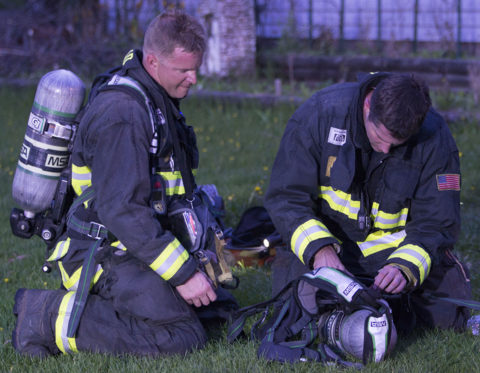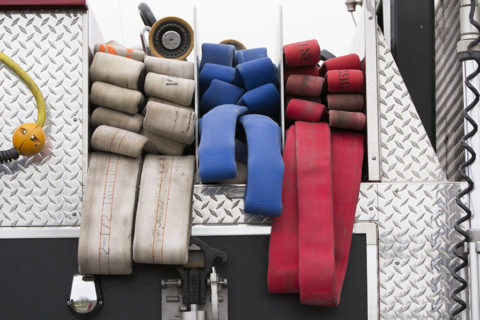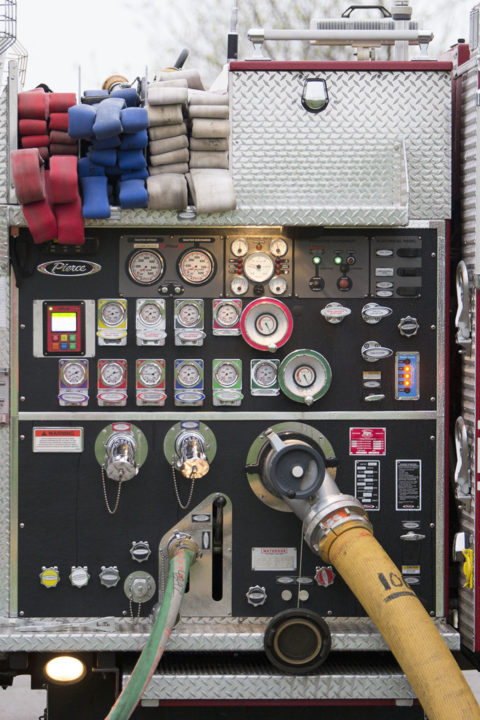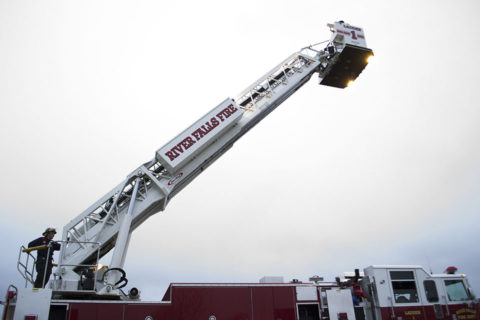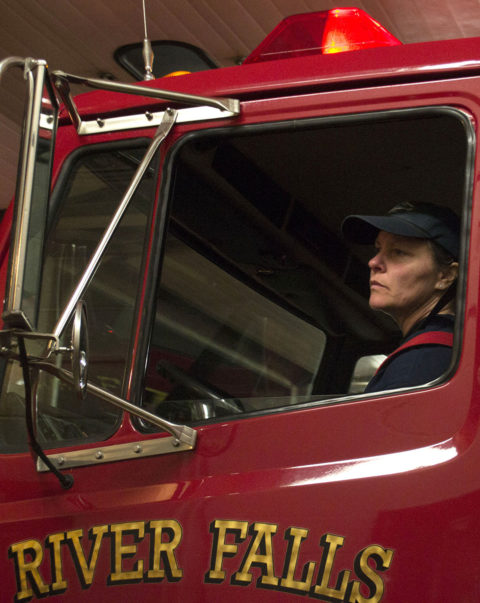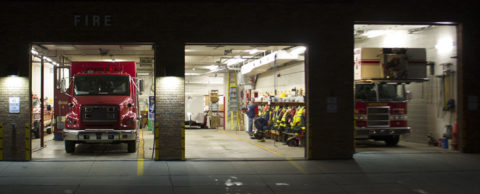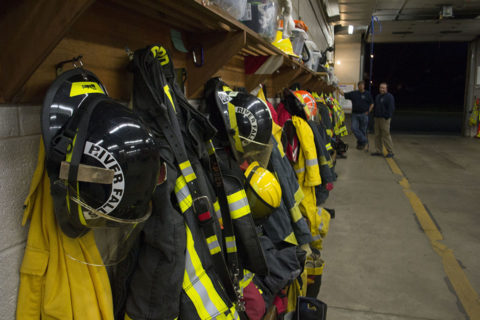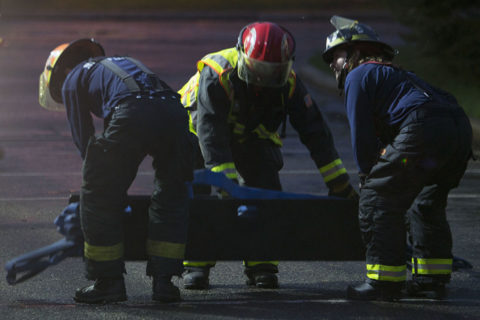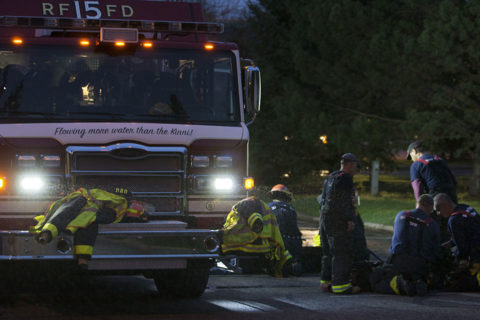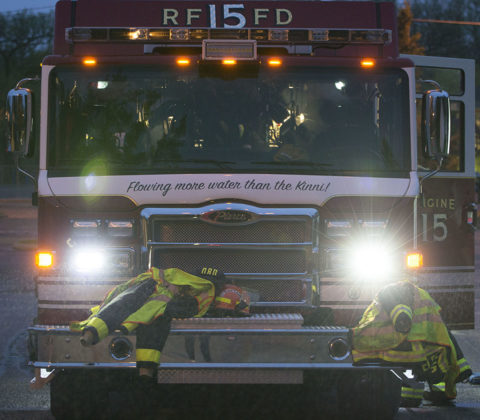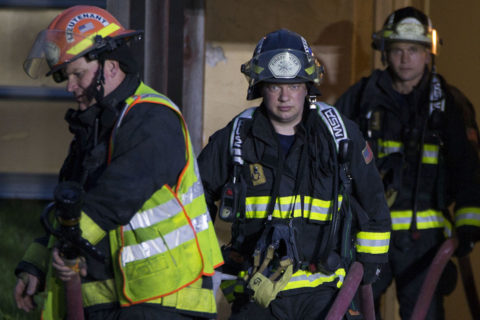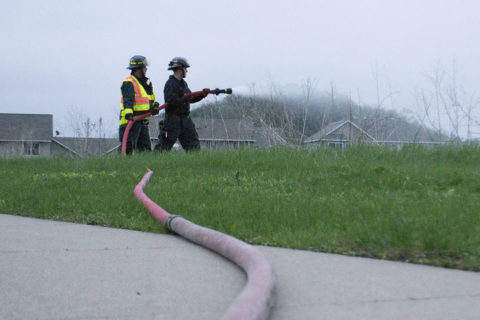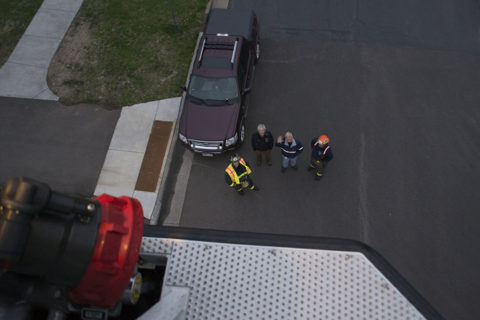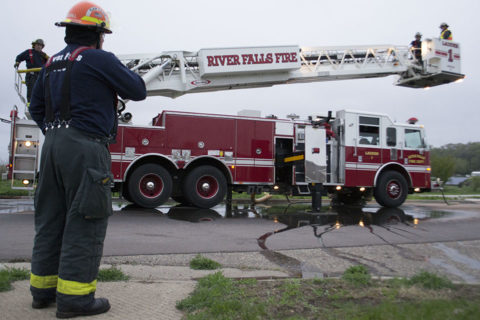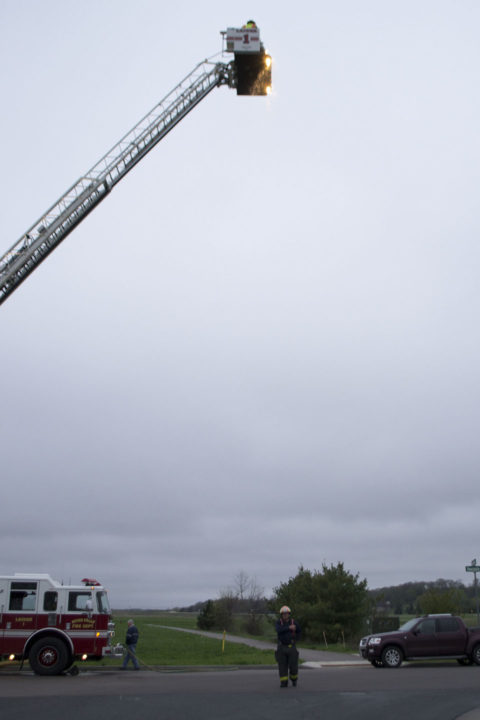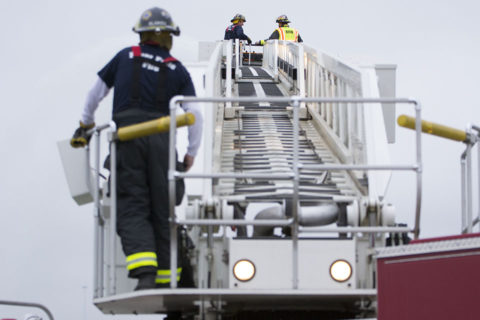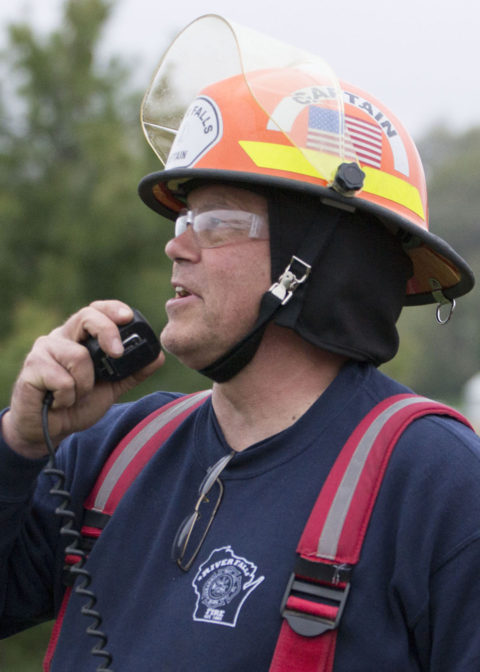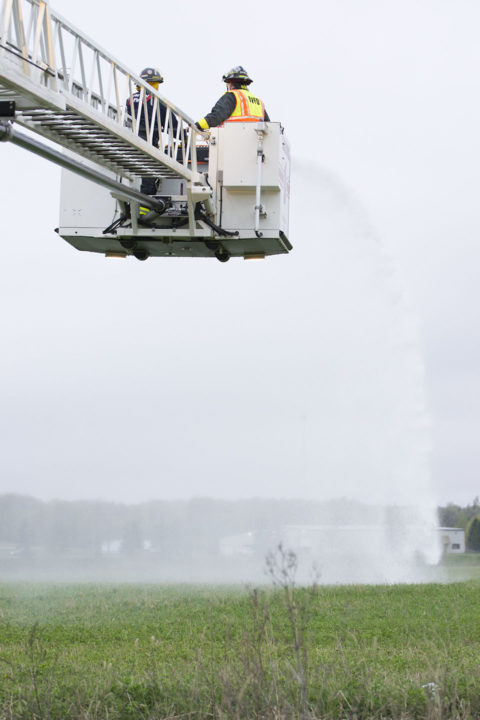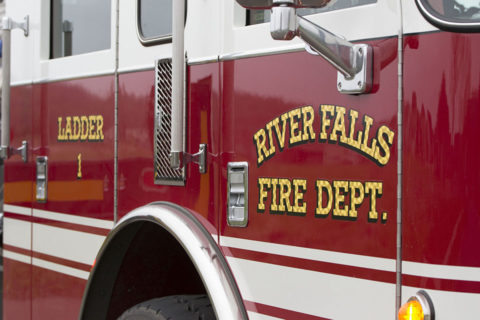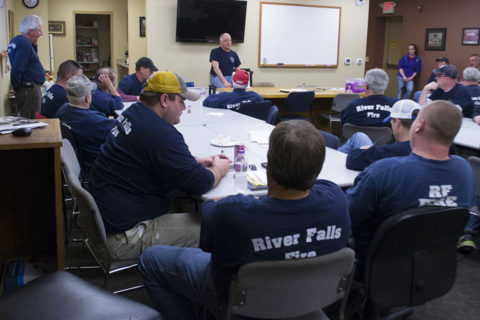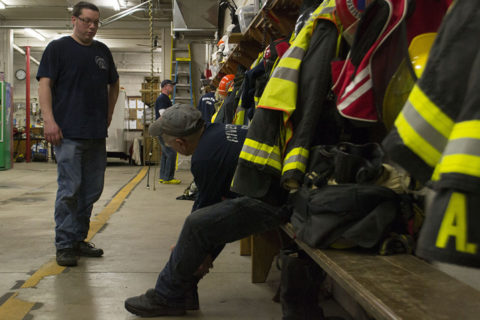Shortage of volunteer firefighters has local, state officials concerned
Falcon News Service
October 19, 2016
Volunteer firefighter shortages in western Wisconsin and the rest of the state could create slower response times, according to officials.
For years, firefighters have been successfully battling all kinds of emergencies, but they never expected to struggle with a shortage of volunteers.
Volunteer firefighter numbers have reached levels that have caused government officials to take action. The 2016 Legislative Council Study Committee on Volunteer Firefighter and Emergency Medical Technician Shortages has been meeting in Madison to review data from different people and agencies about the effects the shortages are causing in communities across the state.
“We are at 41 [volunteers] and we would like to be at 50 or 55,” said River Falls Fire Chief Scott Nelson. According to Nelson, the River Falls Fire Department has a slow attrition rate of volunteers. If the department offers a class at the Chippewa Valley Technical College in River Falls, the numbers come back up.
As in River Falls, many fire departments in western Wisconsin departments are down 15 percent to 30 percent on average.
In Wisconsin, 80 percent of fire departments are volunteer. Data about the actual numbers of volunteer firefighters across the state is limited because the U.S. Department of Labor does not record volunteers, according to a study by Margit Kelley and Andrea Brauer submitted to the Legislative Council Study Committee in July.
Many reason have been cited as to why volunteer numbers are low, but Nelson has his own suspicions.
“We are a very transient society and people just don’t stick around anymore,” he said. “That makes it hard to keep volunteers.”
According to the National Fire Protection Agency (NFPA), 69 percent of all firefighters in the U.S. are volunteers. Almost all volunteer firefighters work in departments that protect fewer than 25,000 people and more than half of those are located in small towns or rural areas.
In 2007, the Federal Emergency Management Agency (FEMA) did an extensive study identifying the changes and possible solutions to firefighter shortages. Yet, almost 10 years later not much has been done to address the low numbers that have continued to drop.
According to Nelson, after 9/11 there was surplus of firefighters, but that has since dropped off and numbers have returned to what they were.
The FEMA study revealed that most towns, both small and large, cannot afford to hire a full-time staff of firefighters and rely heavily on volunteers.
“The state needs to try to help small communities to maintain their volunteer services. Surely there must be some positive actions that can be taken to improve circumstances for our volunteers,” Barry Kuenkle, chief of the Cumberland Fire District in Barron County, said in testimony he gave to the legislative council in September. He went on to say that many departments are suffering because of retention and recruitment.
“We self-police ourselves,” said Nelson. The way a fire department is run is key for hiring recruits and keeping them around for a long time, according to Nelson. In River Falls, turnover is low. Not only does Nelson check in on firefighters who don’t show up for training, but almost all the volunteer members check on each other as well.
Nelson also said River Falls city officials have been helpful.
“I have to give full credit to the city. Without them, I couldn’t do my job,” said Nelson.
In St. Croix Falls, Wisconsin, volunteer firefighter Kirk Anderson is one of the newer recruits.
“If people are looking for something to get involved in that allows them to be part of a family, the fire department does have that unique feel,” Anderson said.
He has been with the department for 18 months. Recruitment and retention, Anderson said, really depend on the fire chief and the department.
“Our department is operating at two-thirds,” Anderson said. Only a handful of people have joined the St. Croix Falls department since he started, Anderson added.
Anderson said he thinks it’s difficult to recruit because people are busy and involved in many different things. Plus, he recognizes that many people do not work where they live, making it hard to volunteer. Anderson is 41 and has five young kids. He said he understands this is a huge sacrifice for his family, but is appreciative that he can do it because being a firefighter has been a big goal of his.
In addition to volunteer firefighter shortage, fire alarm call volume has gone up. In the United States, calls to fire departments in 1980 totaled 10.8 million. Call volume has been rising each year since, reaching an all-time high of more than 30.6 million calls in 2015, according to the NFPA.
It takes a special temperament and a desire for the social aspect to be a firefighter, said Nelson.
“There is a very special bond between firefighters,” he said. “We are risking our lives, sometimes for one another — it’s hard to get that kind of support anywhere else.”

